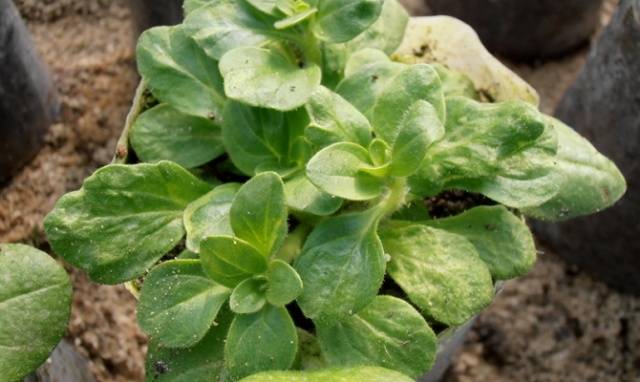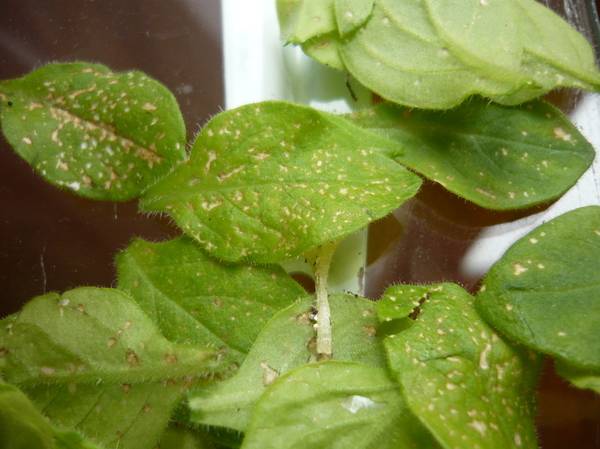Content
Petunia is an amazing flower designed to decorate garden beds and balconies. The South American plant has taken root well in Russia and has been popular with beginners and experienced gardeners for many years. Petunia is grown mainly by seedlings in order to speed up the flowering process. However, unfortunately, sometimes problems can arise in growing petunia seedlings. The most common problem is yellowing of the leaves. But why petunia seedlings turns yellow, what could be the reasons for this and how to correct the situation? The answer to these and some other questions can be found in the article below.
Reasons why petunia seedlings turn yellow
Excess moisture
When yellow, brittle leaves appear on petunia seedlings, you should think about whether the plant roots are suffering from excess moisture. So, the most common cause of yellowness is root rot. Petunia roots, being constantly in an environment with high humidity, experience oxygen starvation, stop developing and absorbing nutrients from the soil. As a result of this anomaly, petunia leaves become yellow and fall off over time.
The root cause of excess moisture accumulation may be lack of drainage or frequent watering of plants.In this case, it is possible to correct the situation and save the petunias. To do this, make drainage holes in the bottom of the container with seedlings and remove yellow leaves from the plants. In case of severe rotting, petunias should be transplanted into fresh, well-drained priming, first treating the roots with an antifungal drug.
Nutrient deficiencies
To grow petunia seedlings, you must use soil rich in nutrients. You can buy it or prepare it yourself by mixing garden soil with peat and sand. Also in the process of growing Petunia seedlings need to be fed. Otherwise, as flower seedlings grow, they may lack beneficial microelements. Especially important for petunia are substances such as iron, sulfur, zinc and magnesium:
- With a lack of iron, petunia leaves turn yellow, but the green color of the veins on the leaves remains. Such symptoms indicate the development of chlorosis. You can replenish the amount of iron in the soil by using the preparations Cytofit and Ferrovit.
- A yellow leaf plate of petunia, with curled dry edges, indicates a lack of magnesium. This trace element can be replenished by using magnesium sulfate.
- Zinc deficiency manifests itself in the form of small yellow spots on the leaf. Over time, yellowness covers the entire leaf blade, which leads to its death. In this case, it is recommended to use zinc sulfate to treat seedlings.
- In the case when the yellow leaves of petunia seedlings acquire a red tint over time, it is worth talking about an insufficient amount of sulfur in the soil.You can add the missing microelement by sprinkling the soil with grated sulfur.
If signs of a deficiency of one or another microelement appear, complex fertilizers can also be used. They contain all the necessary minerals and will become a source of healthy nutrition and enhanced seedling growth. To fertilize plants, it is recommended to alternate root and foliar fertilizers.
Pests
Insects can be another cause of yellow petunia leaves. Despite the fact that the seedlings are indoors, they can be parasitized by:
- Spider mite. This small insect is red in color and “prefers” living conditions with high soil moisture and low air humidity, which is quite typical for petunia seedlings. Spider mites are adapted to home conditions and open ground. The presence of this pest is indicated by the entangling web on the leaves, their yellow color and slow growth of seedlings. You can defeat the mite by treating the leaves with a soap solution. Also, in the fight against the pest, they use powdered sulfur and special chemicals that can be used harmlessly at home.
- Aphid - another pest that is well known to all gardeners and flower growers. These small insects settle on the underside of the leaf and are often invisible to the eye until serious problems with the plant occur. Aphids feed on the cell sap of leaves, causing them to turn yellow and curl, after which they dry out.Fighting aphids on seedlings is quite difficult and, probably, with large areas of infestation, it is easier to destroy the plants than to treat them. However, particularly painstaking flower growers suggest using a solution prepared from soapy water and nicotine sulfate (1 g of substance per 1 liter of soap solution). The resulting product should be sprayed on the seedlings and wrapped in a plastic bag for a day. After the required processing time, the seedlings are washed with clean water.
- Whitefly – a frequent guest of glazed balconies, loggias and greenhouses. This insect looks like a small, light-colored butterfly. As a rule, its fluttering over petunia ends with the appearance of white pigment spots, and then yellowness on the leaves. Soon such leaves curl and fall off, and the plant dies. In addition to direct harm to plants, whiteflies can become a source of fungal diseases, the spores of which they carry. To combat the pest, only special preparations are used.
When growing petunia seedlings, it is worth remembering that it is much easier to fight the pest in the initial stages of infestation. Late detection or lack of measures to prevent the harmful effects of pests on seedlings leads to the inevitable death of petunias. You can learn more about methods of controlling seedling pests at home in their video:
Diseases
The reason that petunia foliage has turned yellow may be a fungal disease - powdery mildew. This disease rarely affects plants growing in protected conditions, however, its source can be untreated soil containing spores of this fungal disease. Often, spores remain dormant and are activated by sudden changes in temperature and humidity.Excessive application of nitrogen-containing bait can also provoke the development of this disease.
Powdery mildew appears in the form of a dense white coating that covers the leaves of petunias. As a result of this effect, the seedlings lose their elasticity and become lethargic. The leaves under the veil of plaque become yellow and then brown.
You can rid seedlings of the disease by treating them with Fitosporin and Topaz. Before treating with these substances, damaged parts of the seedlings should be removed and, if possible, burned. Adult petunias infected with powdery mildew are transplanted into new soil and a disinfected pot.
Conclusion
In order to avoid all of the above troubles, you should carefully monitor the petunia seedlings. For watering plants, it is better to use soft, settled water. You can also soften it by adding a small amount of lemon juice. Regularly (once every 2 weeks) young petunias should be fed with complex fertilizers, which will allow the seedlings to develop harmoniously. If pests are detected, measures should be taken as soon as possible to destroy them, otherwise the seedlings will become a source of nutrition and prosperous existence for them. Thus, only an attentive, caring owner will receive healthy, strong petunia seedlings as a reward for his efforts, which will decorate flower beds and flowerpots with bright, beautiful flowers.















